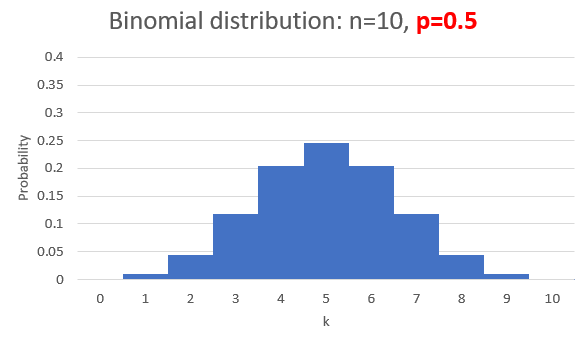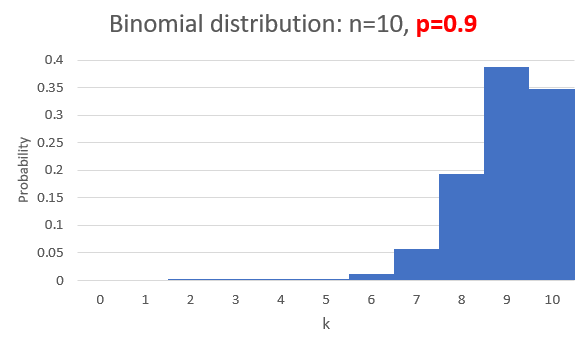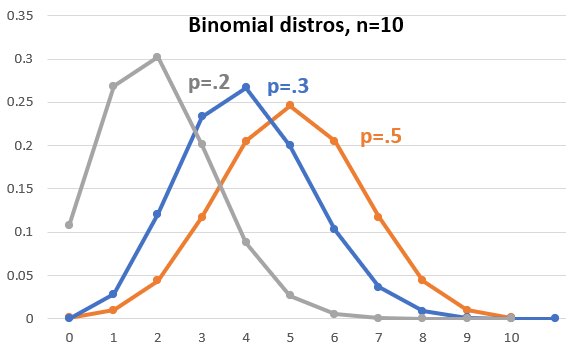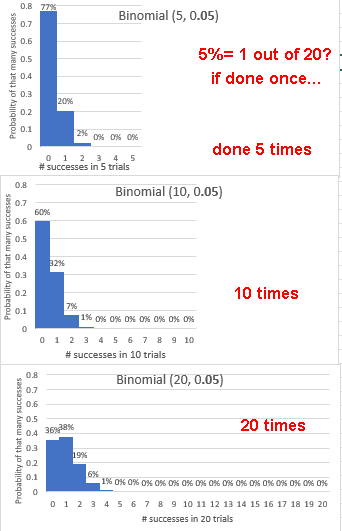In a sample of size n from a population that proportion p have a certain feature what's the chance that 0, 1, 2, ..., n of the sample have the feature?
The number of successes in a sequence of n independent experiments, each asking a yes-no question,
and each with its own boolean-valued outcome: success/yes/true/one (with probability p)
or failure/no/false/zero (with probability q = 1 - p).
The sample space S = {0,1,2,3,...,n} i.e. the number of successes, k.
P(k) the probability that in the n trials there will be k successes:
P(k)=
The nCk is the number of positionings of where the k successes can be.
[Alternate notation: let Χ be a random variable, P(Χ=x) = P(x) above.]
Ex.: A fair coin (p=0.5) is tossed. In n=10 tosses what is the
probability of achieving k=0, k=1, 2, 3,..., k=10 heads?
Ex.: Today there is a 30% chance of rain. On n=5 similar days, what are the chances
that it didn't rain (k=0), it rained on one day (k=1), it rained on two days (k=2),
..., it rained on all five days (k=n=5)?
Ex.: If you make 80% of your shots/throws/kicks/whatevers, what are the chances that in
a game of n=6 attempts you make none of them (k=0), all of them (k=n=6), and each
number k between 0 and 6?
Ex.: A biased coin comes up heads with probability p=0.3 when tossed. In n=5 tosses what is the
probability of achieving k=0, k=1,..., k=5 heads?
Ex.: From a large population having a certain feature with probabilty p
draw a sample of size n. [color blindness 8%]
What are the probabilities that k=0, k=1, k=2, ..., k=n items have the feature?
Ex.: A process has a 60% chance of success. What are the probabilities that in
k=0, k=1,...,k=n applications of the process success occurs?
When k=n, i.e. all n trials are successful, P(n)=pn.
When k=0, i.e. all n trials are failures, P(0)=qn.
The probability of at least one success in the n trials is the sum of the P(1),P(2),...P(n)
which is 1-P(0) which equals 1-qn.




